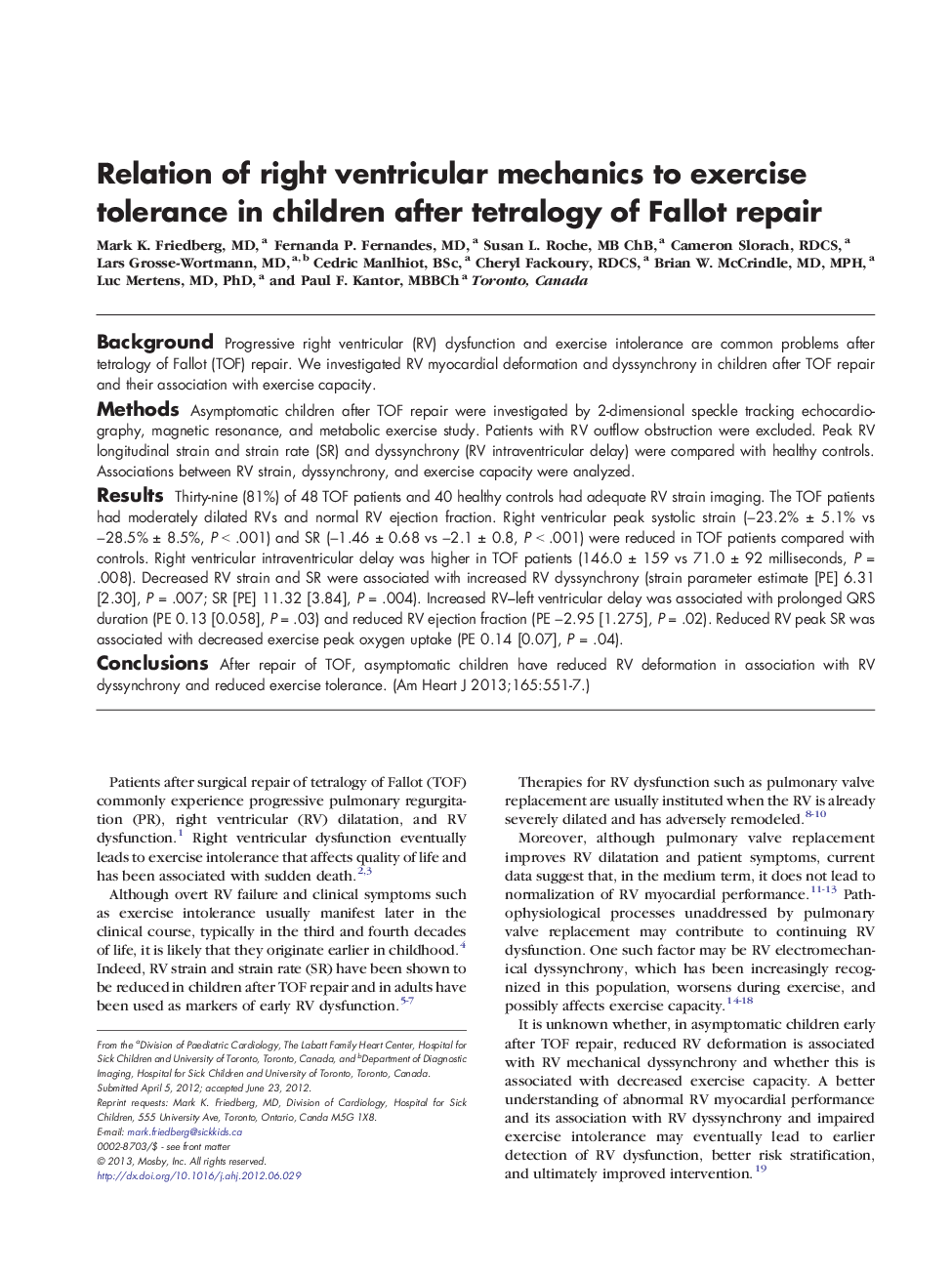| کد مقاله | کد نشریه | سال انتشار | مقاله انگلیسی | نسخه تمام متن |
|---|---|---|---|---|
| 5928851 | 1167800 | 2013 | 7 صفحه PDF | دانلود رایگان |

BackgroundProgressive right ventricular (RV) dysfunction and exercise intolerance are common problems after tetralogy of Fallot (TOF) repair. We investigated RV myocardial deformation and dyssynchrony in children after TOF repair and their association with exercise capacity.MethodsAsymptomatic children after TOF repair were investigated by 2-dimensional speckle tracking echocardiography, magnetic resonance, and metabolic exercise study. Patients with RV outflow obstruction were excluded. Peak RV longitudinal strain and strain rate (SR) and dyssynchrony (RV intraventricular delay) were compared with healthy controls. Associations between RV strain, dyssynchrony, and exercise capacity were analyzed.ResultsThirty-nine (81%) of 48 TOF patients and 40 healthy controls had adequate RV strain imaging. The TOF patients had moderately dilated RVs and normal RV ejection fraction. Right ventricular peak systolic strain (â23.2% ± 5.1% vs â28.5% ± 8.5%, P < .001) and SR (â1.46 ± 0.68 vs â2.1 ± 0.8, P < .001) were reduced in TOF patients compared with controls. Right ventricular intraventricular delay was higher in TOF patients (146.0 ± 159 vs 71.0 ± 92 milliseconds, P = .008). Decreased RV strain and SR were associated with increased RV dyssynchrony (strain parameter estimate [PE] 6.31 [2.30], P = .007; SR [PE] 11.32 [3.84], P = .004). Increased RV-left ventricular delay was associated with prolonged QRS duration (PE 0.13 [0.058], P = .03) and reduced RV ejection fraction (PE â2.95 [1.275], P = .02). Reduced RV peak SR was associated with decreased exercise peak oxygen uptake (PE 0.14 [0.07], P = .04).ConclusionsAfter repair of TOF, asymptomatic children have reduced RV deformation in association with RV dyssynchrony and reduced exercise tolerance.
Journal: American Heart Journal - Volume 165, Issue 4, April 2013, Pages 551-557